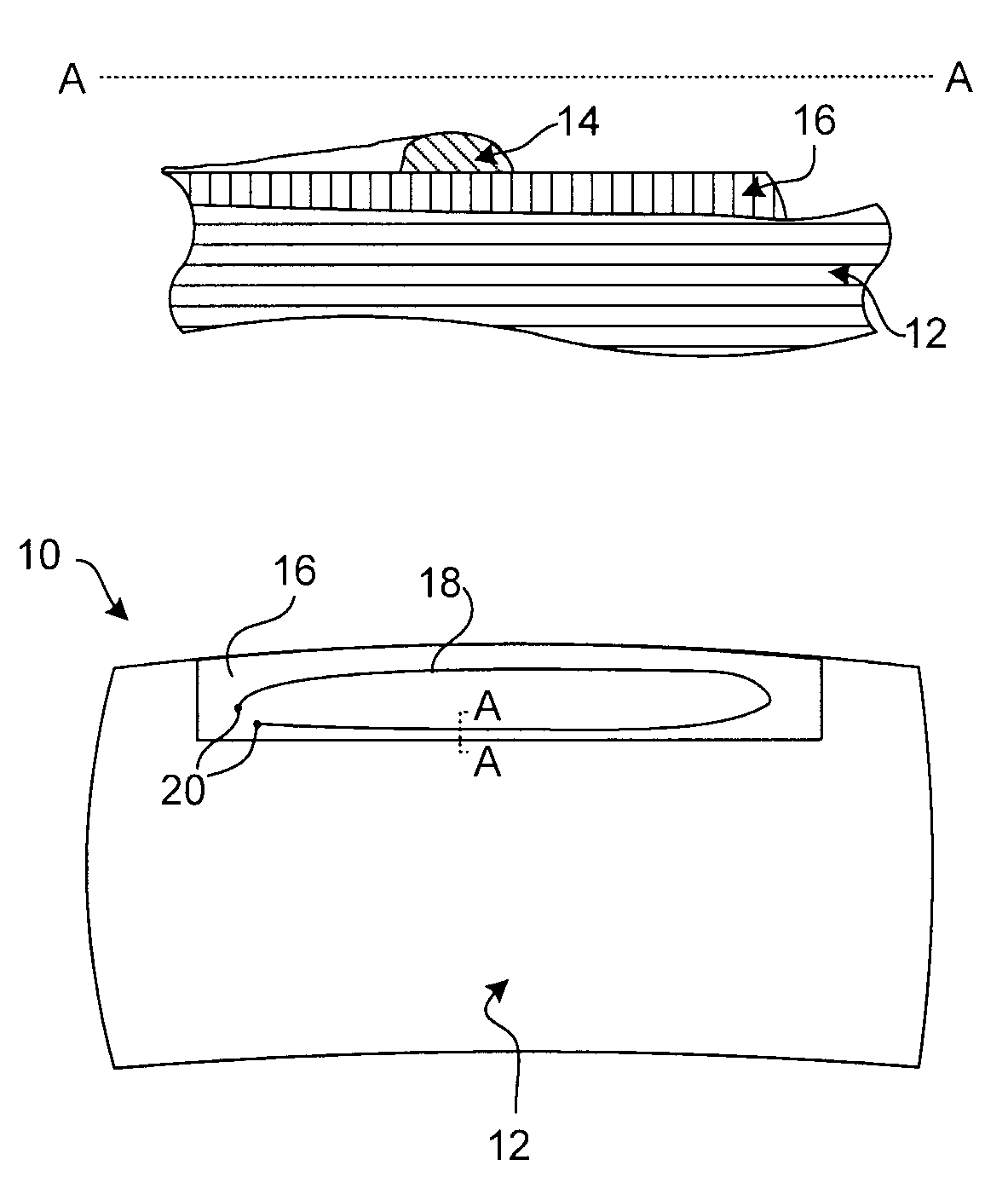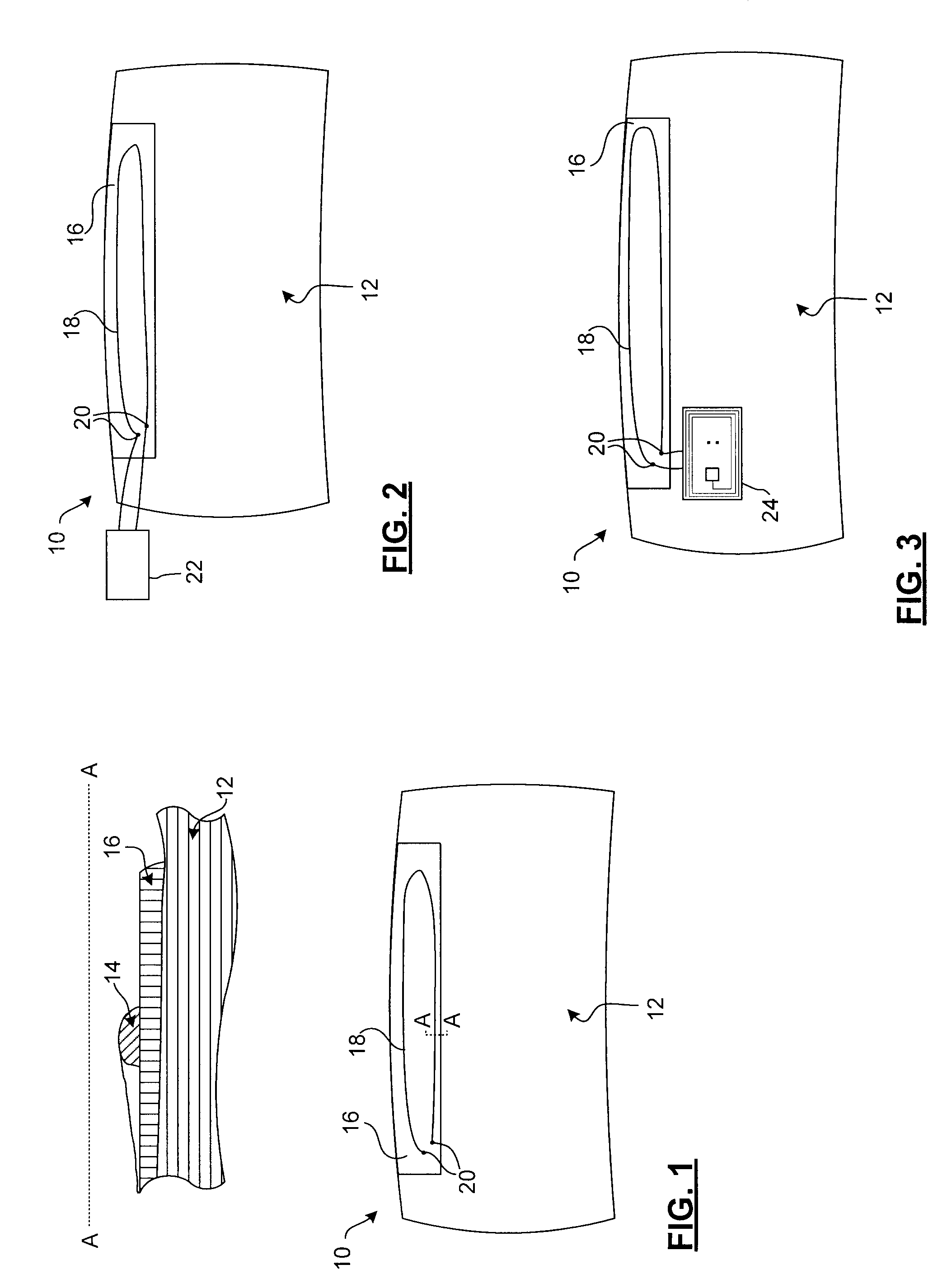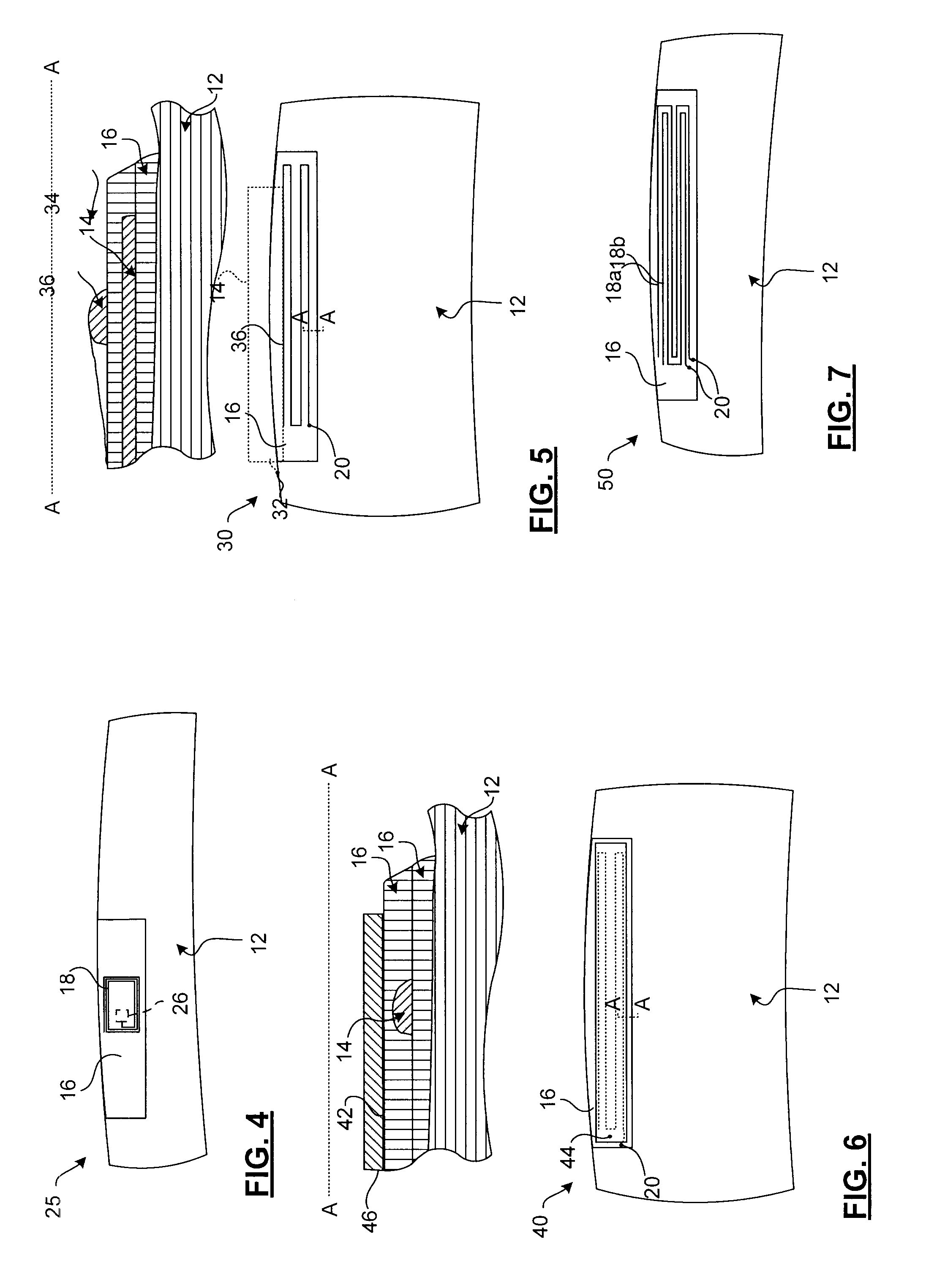Surface-mounted crack detection
a sensor and surface technology, applied in the direction of instruments, non-metal conductors, conductors, etc., can solve the problems of high risk of cracking on certain parts of structural surfaces, labor-intensive tests, and time-consuming
- Summary
- Abstract
- Description
- Claims
- Application Information
AI Technical Summary
Problems solved by technology
Method used
Image
Examples
example
[0070]The circuit diagram shown in FIG. 10 was used to verify the principle of the invention. The sensing circuit used a 10-volt DC power supply, which was connected to an analogue input of a computerized MTS load frame controller. The MTS load frame controller can be set to “alarm” (notify the operator by displaying a warning message) or autonomously “halt” a command program sequence immediately upon detecting a pre-set change in the signal on the analogue input circuit. When the voltage on the analog input dropped below 9 volts, the MTS load frame controller halted the test and stopped the cyclic loading. A lap joint shown in FIG. 11 stopped after 280,000 cycles.
[0071]FIG. 11 is an image of a riveted, lap jointed, aluminum test coupon upon which a surface-mounted crack detection apparatus has been affixed. The undercoat was a manually painted on layer of Omega CC™ high temperature ceramic-based cement. The undercoat was found to be about 5 / 1000ths of an inch thick. The electricall...
PUM
| Property | Measurement | Unit |
|---|---|---|
| percent elongation | aaaaa | aaaaa |
| percent elongation | aaaaa | aaaaa |
| percent elongation | aaaaa | aaaaa |
Abstract
Description
Claims
Application Information
 Login to View More
Login to View More - R&D
- Intellectual Property
- Life Sciences
- Materials
- Tech Scout
- Unparalleled Data Quality
- Higher Quality Content
- 60% Fewer Hallucinations
Browse by: Latest US Patents, China's latest patents, Technical Efficacy Thesaurus, Application Domain, Technology Topic, Popular Technical Reports.
© 2025 PatSnap. All rights reserved.Legal|Privacy policy|Modern Slavery Act Transparency Statement|Sitemap|About US| Contact US: help@patsnap.com



